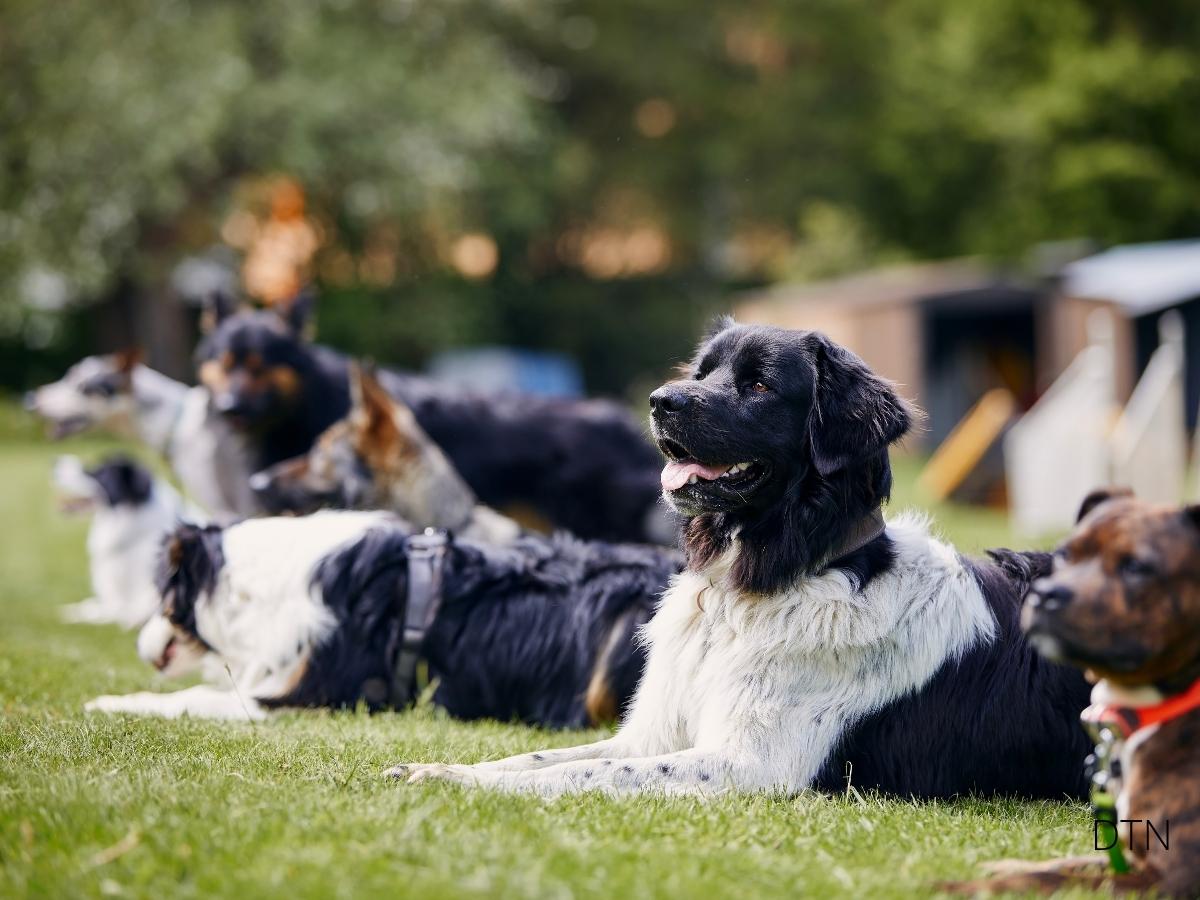Introduction: The Digital Revolution in Understanding Our Canine Companions
Have you ever wondered what patterns might emerge if we could analyze the training experiences of millions of dogs worldwide? In an era where technology tracks our every move, our four-legged friends are joining the digital revolution too. From GPS collars to training apps, we’re collecting unprecedented amounts of data about how dogs learn, behave, and interact with their humans.
This isn’t just about fancy gadgets – it’s revolutionizing our understanding of canine cognition. By analyzing large-scale datasets from apps, devices, and training platforms, researchers are uncovering patterns that were invisible to even the most experienced trainers. These insights are reshaping everything from puppy training to behavioral rehabilitation, offering hope for dogs and owners who’ve struggled with traditional methods. Let’s explore how big data is transforming our understanding of our furry friends. 🐾
Learning Patterns & Individual Variability
Understanding How Your Dog Learns Through Data
When we examine training logs from thousands of dogs, fascinating patterns emerge. Just as surgeons need about 50 procedures to reach proficiency, dogs show remarkably consistent learning curves. Your pup might need 30-40 repetitions to master “sit,” but could require 150+ attempts for reliable off-leash recall.
The Three Phases Every Dog Owner Should Know:
- Initial rapid progress (days 1-7): Your dog seems to “get it” quickly
- The frustrating plateau (weeks 2-4): Progress slows dramatically
- Consolidation and mastery (weeks 5-8): The behavior becomes reliable
Understanding these patterns helps set realistic expectations and persist through challenging phases.
Breed-Specific Learning Profiles Data confirms what trainers suspected – breed matters tremendously:
- Border Collies and German Shepherds master complex commands in 40-60% fewer repetitions
- Ancient breeds like Akitas respond better to shorter, frequent sessions
- Terriers learn prey-drive behaviors fast but need 2-3x more practice for impulse control
- Retrievers learn fetch-based commands 50% faster than average
These differences reflect thousands of years of selective breeding. Your Beagle’s nose-to-the-ground behavior isn’t stubbornness; it’s genetic programming that data helps us work with, not against.
Human-Dog Interaction Dynamics
The Human Factor: Your Role in Your Dog’s Success
The most groundbreaking revelation? Human behavior is the single most predictive variable for training success – more important than breed, age, or behavioral issues.
The Consistency Sweet Spot: Dogs with consistent training schedules show 3.5x better retention rates. But “consistent” doesn’t mean daily:
- 3-4 sessions per week for skill acquisition
- 5-15 minute sessions (longer isn’t better!)
- 48 hours between sessions for memory consolidation
- Morning sessions show 23% better performance
Your dog’s brain needs time to process learning. Those rest days are essential for transforming short-term learning into long-term behavior.
Common Communication Errors That Derail Progress:
- Using “down,” “lay down,” and “lie down” interchangeably delays learning by 40%
- Rewards delivered after 3 seconds show 60% reduced effectiveness
- Dogs whose handlers showed frustration took 2.3x longer to master skills
These aren’t just tips – they’re statistically validated patterns from millions of interactions. 🧠
Technology Integration & Behavioral Insights
What Wearables Reveal About Learning
Modern dog wearables provide insights impossible to obtain through observation alone. When we combine accelerometer data, GPS tracking, and heart rate monitoring with training logs, invisible patterns suddenly become clear.
The Stress-Learning Connection:
- Dogs with elevated heart rates 30 minutes before training show 25% poorer performance
- Post-exercise training (after a 10-minute walk) improves focus by 40%
- When heart rate variability drops below 40ms (indicating stress), learning capacity drops 50%
This data suggests managing your dog’s emotional state might be more important than perfecting technique. Those “bad training days” might simply be high-stress days.
The Big Three Behavioral Challenges
Analysis of millions of training logs reveals consistent problem patterns:
1. Recall Failure (38% of all problems)
- Urban dogs show 45% worse recall than rural dogs
- Only 12% achieve reliable off-leash recall without professional help
- Success improves to 73% with structured long-line protocols
2. Leash Reactivity (31% of all problems)
- Small dogs are 2.3x more likely to develop this issue
- Early socialization (before 14 weeks) reduces incidence by 50%
- Counter-conditioning shows 67% success rate over 12 weeks
3. Separation Anxiety (24% of all problems)
- Pandemic increased these issues by 140%
- Gradual desensitization shows 71% improvement
- Technology-assisted training improves outcomes by 30%
Dogs have a way of finding the people who need them, filling an emptiness we don’t even know we have.
– Thom Jones

Practical Applications That Work
Evidence-Based Intervention Strategies
Analyzing thousands of cases reveals what actually works:
For Reactivity/Aggression:
- Desensitization + Counter-conditioning: 68% success
- Punishment-based methods: 8% true improvement
- Medication + behavior modification: 84% success
For Anxiety/Fear:
- Gradual exposure: 71% improvement
- Confidence-building activities: 64% improvement
- Combination protocols: 88% improvement
The data consistently shows combination approaches outperform single interventions.
The Generalization Challenge
Dogs require practice in 5-7 different locations before behaviors become truly generalized. This explains why your dog who “knows” sit perfectly at home seems to forget at the vet’s office – they’ve never learned “sit” in that context.
The Maintenance Reality: Without practice, reliability drops 50% within 8 weeks. However, maintenance is simpler than you’d think:
- Weekly 5-minute refreshers maintain 85% reliability
- Monthly “challenge sessions” prevent context rigidity
- Integration into daily life shows 95% retention
Revolutionary Applications
Shelter and Rescue Transformation
Data-driven protocols are saving lives:
- Return rates dropped from 15% to 6% using predictive matching
- High-risk dogs receiving targeted intervention show 70% adoption success
- Foster programs guided by data show 89% permanent placement
Adaptive Training Apps
Modern apps informed by big data can:
- Adjust difficulty based on your dog’s learning curve
- Predict struggles and offer preemptive tips
- Provide breed-specific modifications automatically
- Track progress invisible to the human eye
These apps aren’t replacing trainers – they’re democratizing access to evidence-based methods.
Predictive Health Through Behavior
Behavioral changes often precede health issues. Machine learning can now detect:
- Cognitive decline 6 months before clinical signs
- Pain-related changes with 82% accuracy
- Early anxiety indicators in 7-week-old puppies
The Neurological Why Behind the What
Data showing stress-learning correlation makes sense neurologically. When stress hormones flood your dog’s system:
- The hippocampus (memory formation) reduces activity by 60%
- The prefrontal cortex (impulse control) goes “offline”
- The amygdala becomes hyperactive, creating fear associations instead of learning
This is why reactive dogs can’t focus – their brains are literally incapable of learning in that state. The data confirms: reducing stress must come before behavior modification.
Additionally, dogs who nap within 2 hours of training show 35% better retention. That post-training snooze isn’t laziness – it’s your dog’s brain cementing what they’ve learned. 🐾
Conclusion: Your Dog in the Age of Big Data
This revolution isn’t just about numbers – it’s about deepening our connection with our canine companions. Every training log and sensor reading contributes to knowledge that helps us understand not just what works, but why and for whom.
For you and your furry friend, this means:
- More effective training based on evidence, not anecdotes
- Faster problem resolution through early intervention
- Reduced frustration through realistic expectations
- Deeper understanding of your dog’s unique needs
The data confirms what dog lovers always knew: every dog is unique, but unique in predictable ways. Your dog’s recall failure isn’t defiance – it might be breed programming, stress levels, and environmental context creating a perfect storm. And now we know exactly how to fix it.
Whether you’re struggling with a specific challenge, starting with a new puppy, or wanting to deepen your bond, big data insights offer unprecedented opportunities for success. The future of dog training isn’t just about teaching commands – it’s about understanding the canine mind and creating partnerships that enrich both ends of the leash.
So next time you practice “sit” with your pup, remember: you’re contributing to a vast understanding of how dogs learn, love, and live alongside us. In the age of big data, every training session counts, and every dog’s story becomes part of the incredible human-canine bond. 🧡






